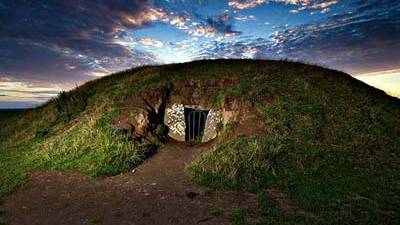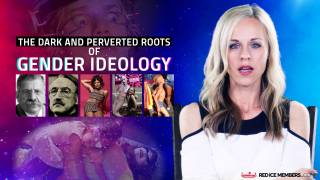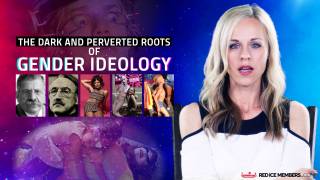Samhain - The Celtic roots of Halloween
Source: newgrange.com
As millions of children and adults participate in the fun of Halloween on the night of October 31st, few will be aware of its ancient Celtic roots in the Samhain (Samain) festival. In Celtic Ireland about 2,000 years ago, Samhain was the division of the year between the lighter half (summer) and the darker half (winter). At Samhain the division between this world and the otherworld was at its thinnest, allowing spirits to pass through.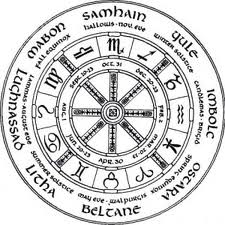 The family’s ancestors were honoured and invited home whilst harmful spirits were warded off. People wore costumes and masks to disguise themselves as harmful spirits and thus avoid harm. Bonfires and food played a large part in the festivities. The bones of slaughtered livestock were cast into a communal fire, household fires were extinguished and started again from the bonfire. Food was prepared for the living and the dead, food for the ancestors who were in no position it eat it, was ritually shared with the less well off.
The family’s ancestors were honoured and invited home whilst harmful spirits were warded off. People wore costumes and masks to disguise themselves as harmful spirits and thus avoid harm. Bonfires and food played a large part in the festivities. The bones of slaughtered livestock were cast into a communal fire, household fires were extinguished and started again from the bonfire. Food was prepared for the living and the dead, food for the ancestors who were in no position it eat it, was ritually shared with the less well off.Christianity incorporated the honouring of the dead into the Christian calendar with All Saints (All Hallows) on November 1st, followed by All Souls on November 2nd. The wearing of costumes and masks to ward off harmful spirits survived as Halloween customs. The Irish emigrated to America in great numbers during the 19th century especially around the time of famine in Ireland during the 1840’s. The Irish carried their Halloween traditions to America, where today it is one of the major holidays of the year. Through time other traditions have blended into Halloween, for example the American harvest time tradition of carving pumpkins.
Two hills in the Boyne Valley were associated with Samhain in Celtic Ireland, Tlachtga and Tara. Tlachtga was the location of the Great Fire Festival which begun on the eve of Samhain (Halloween). Tara was also associated with Samhain, however it was secondary to Tlachtga in this respect.
The entrance passage to the Mound of the Hostages on the Hill of Tara is aligned with the rising sun around Samhain. The Mound of the Hostages is 4,500 to 5000 years old, suggesting that Samhain was celebrated long before the first Celts arrived in Ireland about 2,500 years ago.
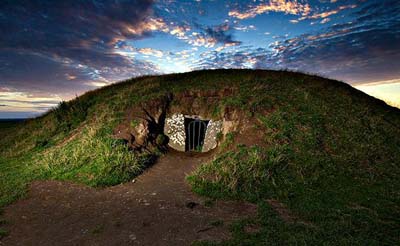
The Diwali Festival
The Hindu Diwali (Divali, Deepavali) Festival known as the Festival of Lights occurs about the same time as Samhain. Diwali marks the Hindu New Year just as Samhain marks the Celtic New Year, could it be that Diwali and Samhain have a common root in antiquity?
Samhain / Halloween
An excerpt from Tlachtga: Celtic Fire Festival by John Gilroy.
The Festival of Samhain marked the end of the Celtic year and the beginning of the new one and as such can be seen to the equivalent of New Year’s Eve. We have seen how the Celts believed that night preceded day and so the festivities took place on the Eve of Samhain. There is no doubt that that this festival was the most important of the four Celtic Festivals. Samhain was a crucial time of year, loaded with symbolic significance for the pre-Christian Irish. The celebrations at Tlachtga may have had their origins in a fertility rite on the hill but it gathered to itself a corpus of other beliefs which crystallised at the great Fire Festival.
The perceptible, and apparent, decline in the strength of the sun at this time of year was a source of anxiety for early man and the lighting of the Winter Fires here symbolised mans attempt to assist the sun on its journey across the skies. Fire is the earthly counterpart of the sun and is a powerful and appropriate symbol to express mans helplessness in the face of the overwhelming sense of the decay of nature as the winter sets in.
Now the sun has descended into the realm of the underworld, the forces of the underworld were in the ascendency. The lord of the underworld, unfettered from the control of the sun, now walked the earth and with him travelled all those other creatures from the abode of the dead. Ghosts, fairies and a host of other non-descript creatures went with him. The Lord of the Dead in Celtic mythology can be identified as Donn.
Mythology tells us that when the invaders of Ireland known as the Miliseans landed at the Boyne, they made their way to Tara. Once there, they were advised by the Druids that they should return to their ships and sail off the shore to the length of nine waves. When they were on the sea a great storm arose which scattered their fleet. The commander of one of the ships was Donn. His ship was broken to pieces in the storm and he himself drowned along with twenty four of his comrades. He was buried on the Skellig Islands off the coast of Kerry.
He is the first of the new wave of invaders to meet his death in Ireland and, as such, he became elevated to the status of god of the dead. The place of his burial became known as Tech Donn - The house of Donn, and soon became identified with with the otherworld. The Celts were fascinated with tracing their ancestry back as far as they could and often they identified their earliest ancestors with the gods of their peoples. Hence, a belief arose that when they died they went to the house of their ancestor, the god of the otherworld.
[...]
Read the full article at: newgrange.com
Tune into Red Ice Radio:
James Swagger - Hour 1 - The Newgrange Sirius Mystery
Maria Wheatley - Hour 1 - Geodetic System of Earth Energies and Ley Lines
Dennis Price - The Dark Side of Stonehenge
Bob Curran - Dark Fairies, Folklore, Spirits & Creatures
